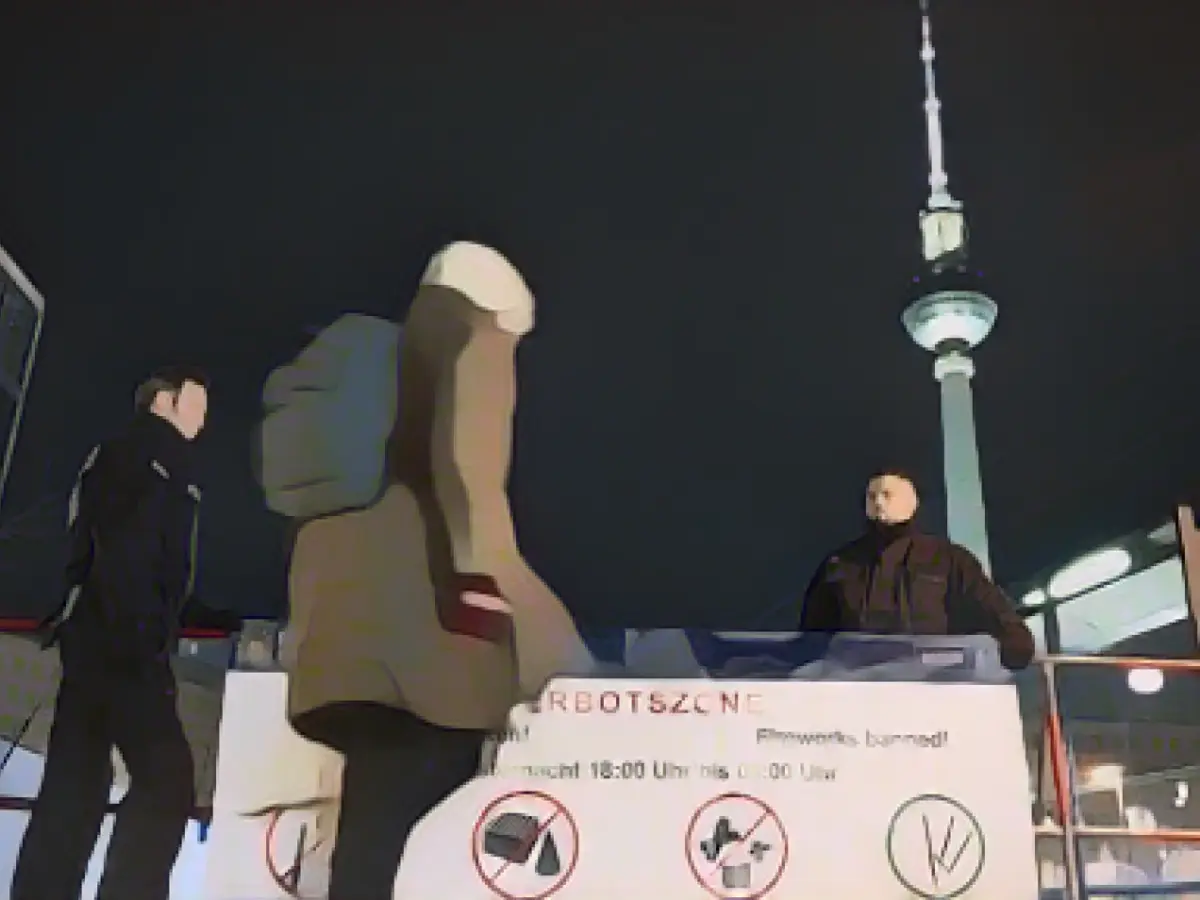New Year's Eve - Berlin police set up no-fire zones
Early on New Year's Eve, the Berlin police began setting up their announced ban zones for firecrackers and other fireworks. Barriers were set up on the sidewalks along a stretch of several hundred meters on Sonnenallee in Neukölln.
Passers-by were asked to show their bags, as it was also forbidden to bring fireworks into the zones. The police were on site with numerous police cars and police officers stood on the street corners. A helicopter circled over the area.
The police had also defined other hotspot areas: These include North Neukölln and Kreuzberg from Kottbusser Tor via Hermannplatz almost to the High-Deck housing estate at the end of Sonnenallee. Another hotspot area is in the south of Berlin, where the most violent attacks on firefighters and police took place a year ago. The two other no-go zones were in Schöneberg and Alexanderplatz.
The reasons for the ban zone on part of Sonnenallee and side streets were both dangerous situations on New Year's Eve in previous years and demonstrations by pro-Palestinian groups in connection with the Gaza war following the terrorist attack on Israel by the Islamist Hamas.
Berlin's Governing Mayor Kai Wegner (CDU) and Senator of the Interior Iris Spranger (SPD) wanted to visit a police station in Sonnenallee in the early evening.
After dark, firecrackers could be heard on the streets in many parts of Berlin. Individual rockets were also fired. There had already been initial riots and attacks on firefighters and police officers in the days leading up to New Year's Eve. Firecrackers were also thrown at uninvolved passers-by. The first patients with firecracker injuries were treated in hospitals.
Read also:
- A clan member is punished here
- Traffic lawyer warns: Don't talk to the police!
- Will he be convicted as Jutta's murderer after 37 years?
- He also wanted to kill his cousin
- Despite the police presence and announced no-fire zones, incidents of criminality still occurred during New Year's Eve in Berlin, particularly in the designated hotspot areas.
- The police helicopter provided aerial surveillance over the no-fire zone on Sonnenallee in Newkölln, ensuring compliance with the ban on fireworks and firecrackers.
- Visitors to the New Year's Eve celebrations in Berlin were warned to stay away from the prohibited zone on Sun Avenue, as the use of fireworks and firecrackers was strictly prohibited to maintain public safety.
- The Berlin police made several arrests near the no-fire zone on Sonnenallee during New Year's Eve, detaining individuals found with illegal fireworks or engaging in criminal activities.
- Fireworks and firecrackers were thrown into the crowded no-fire zone on Sonnenallee by aggressive attackers, causing panic and injuries among the unsuspecting bystanders.
- The police in Berlin worked diligently on New Year's Eve to maintain order and ensure the safety of the public, responding promptly to any incidents of criminality or public disturbances in the designated no-fire zones.
Source: www.stern.de








